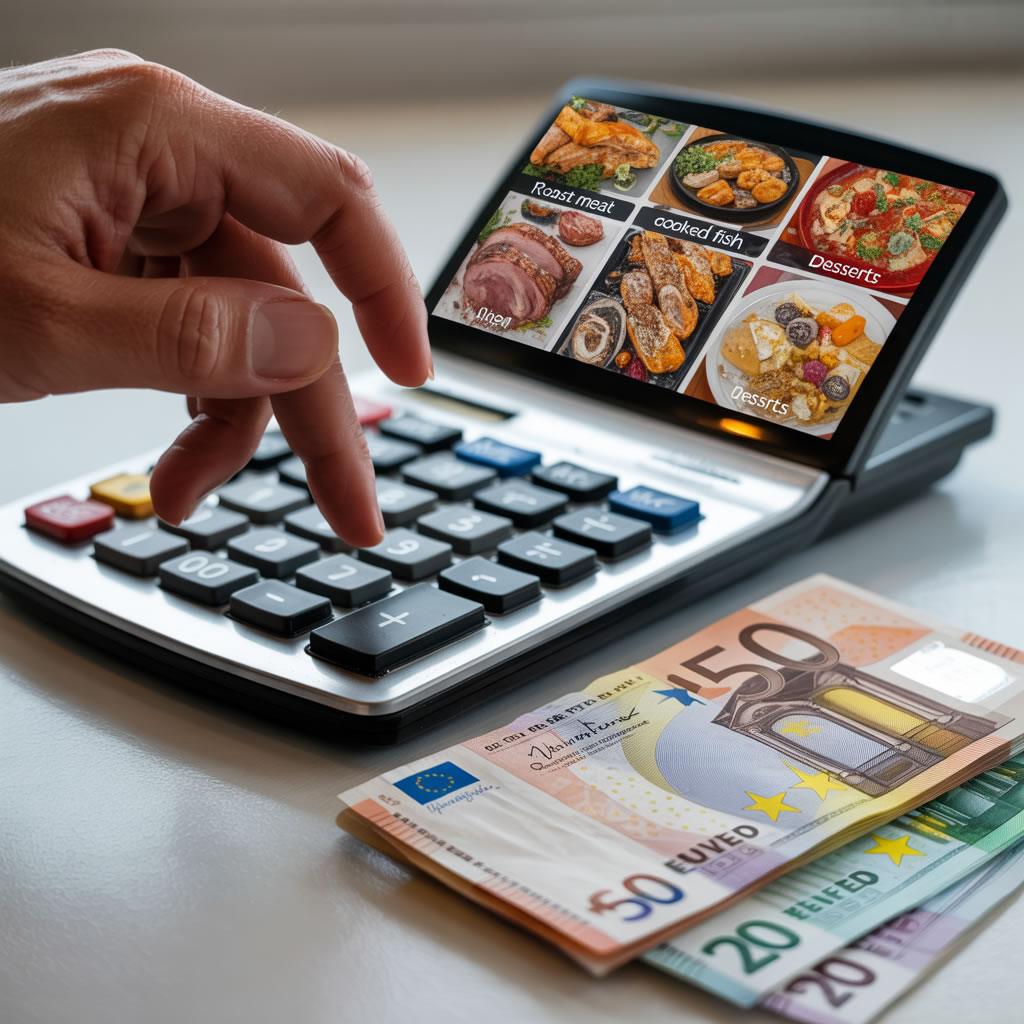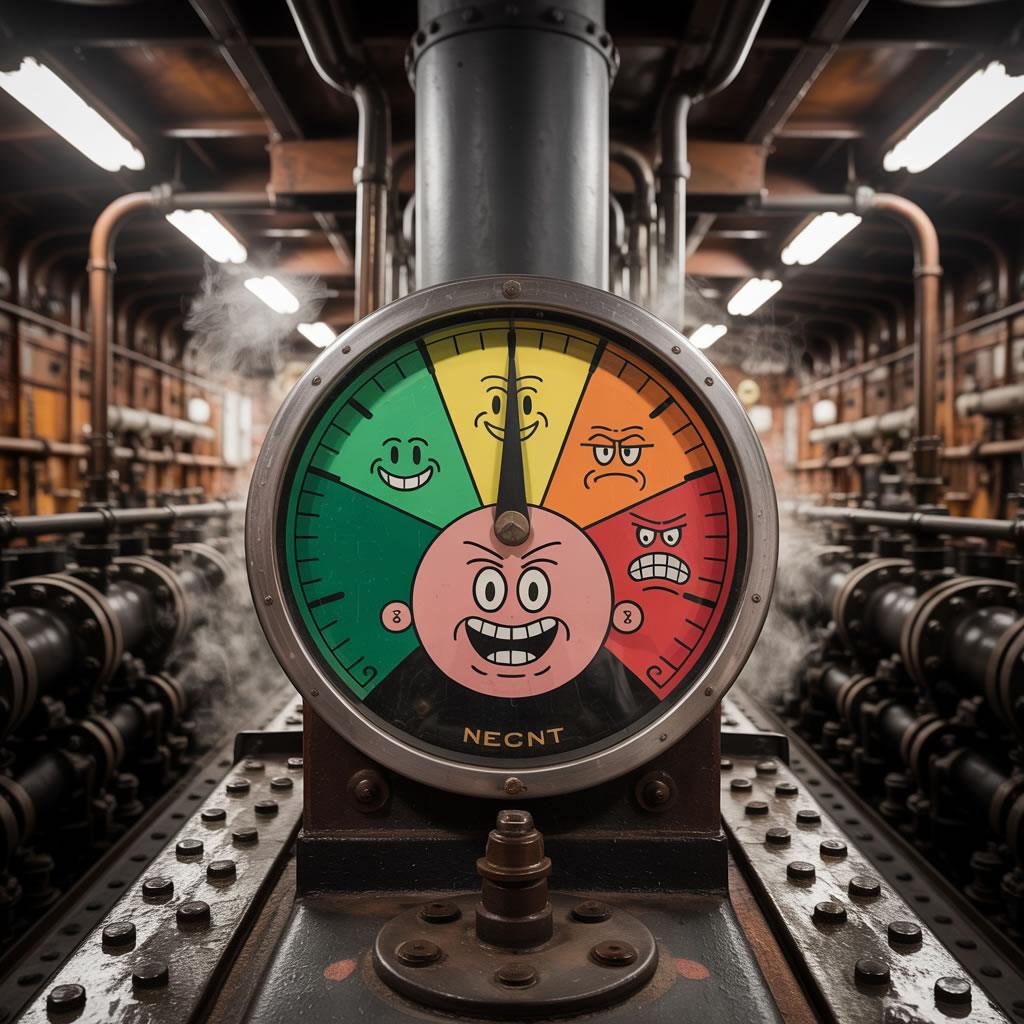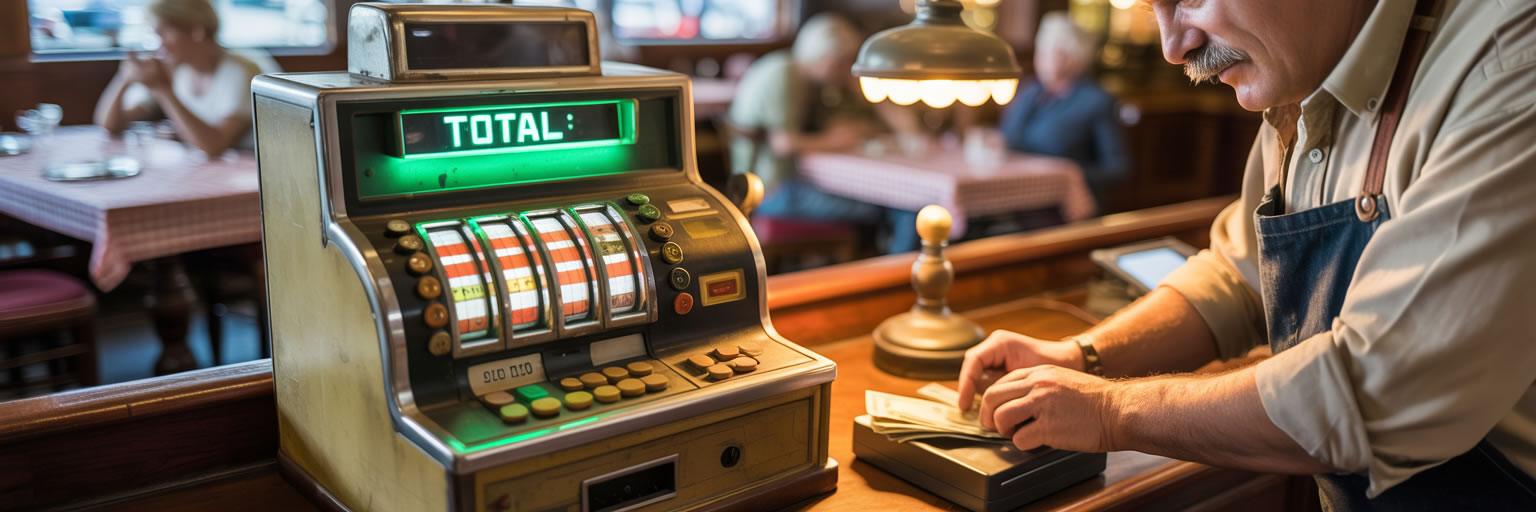Why a first aid kit?
In these restaurant FAQs, you’ll find information, downloadable manuals, tests, articles and questions that someone like you has already asked.
Because I know what the day-to-day of a restaurant is like. And I know that sometimes, when everything feels like it’s about to blow up,
you just want a good piece of advice, an answer, a clear action to fix it.
That’s completely normal. We’ve all been there, and I know there are ways out.
This page was created so you have free resources and tools to make your daily routine easier.
Discover key answers on management, kitchen, team, sales, hygiene and emotional coaching.
If what you find here isn’t easy to apply, doesn’t solve your problem or you get stuck and don’t know where to start, maybe that’s the sign telling you you need us.
First, browse and explore here. And if you want more… maybe it’s no coincidence that life brought you to Sistemics2

I talk to you about the new hospitality,
but do you really know what it is?
Do you want to understand how pioneering companies see the industry?
Find out whether your restaurant is already aligned with the new hospitality model or if there are still areas to improve so you can be part of it.
Take the following test to find out
👇👇👇

How do you lead your restaurant?
Your leadership style has a direct impact on your team and the customer experience.
There are different ways to be in charge, and each one creates a specific daily atmosphere.
Do you want to know what real impact yours has?
Click and take the leadership test
👇👇👇

Do you know your restaurant’s food cost?
Food cost is one of the main indicators of whether you’re doing things right.
If it’s under control, it doesn’t guarantee success—but if it’s off, things are definitely going wrong.
Find out what yours is with our free calculator.
Click and calculate your food cost
👇👇👇

And how are you doing?
Running a project is a real challenge. I know your daily grind—pending payments, staff messing things up, prices that keep rising, picky customers, and an administration that shows no mercy.
How are your emotions holding up right now?
Click and take the stress test
👇👇👇
I’ve created a practical manual
to introduce you to a new kind of hospitality
It’s my small contribution to the industry and to someone like you
I’m sharing this e-book with you so you can get to know me and have a visual, practical and honest resource to start optimizing the way you manage your restaurant—
without losing your essence or your health.
In the e-book, you’ll find:
✔️ How to uncover your most unique and special value
✔️ Strategies to optimize costs with clarity, not fear
✔️ Keys to help your kitchen run more calmly
✔️ Techniques to activate your team—even when you’re not around
✔️ And also neuromarketing tricks to boost your sales
CHOOSE YOUR LANGUAGE. DOWNLOAD IN CATALAN OR SPANISH 👀👉


FREQUENTLY ASKED QUESTIONS
MANAGEMENT AND END-OF-MONTH ISSUES

1- Why is it that even when I fill the restaurant, the numbers still don’t add up?
You’re selling a lot, but making little.
If you don’t control the cost of what you buy, the margin of what you sell, and the hours you pay, your business could be leaking money without you even noticing.
Start by looking at what percentage of your revenue goes to the kitchen (food and drinks), staff (wages), energy costs (electricity, water and gas), and fixed or indirect expenses (rent, depreciation, taxes, leasing, insurance, etc.).
Divide each cost category by your total revenue to get the ratio. This is the foundation of economic control in a restaurant. That’s how you’ll know where the problem lies: in management, cost structure, or sales level.
👉 Want to check it out? Go back to question 2 of this FAQ block for restaurants.
And if you don’t find your answer there, that’s the clearest and most irrefutable reason to hire the first phase of Sistemics2
2- How much money should I have left at the end of the month for the business to be profitable?
A profitable restaurant generates enough margin to cover everything and still keep at least 10–15% net profit.
We always talk in percentages, not absolute numbers, because everything depends on your revenue volume.
Some restaurants reach a 20% margin, but aim for 10% as your starting goal and grow from there.
Do the math: revenue – purchases – salaries – rent and utilities. Anything left?
If not, the business might be poorly structured. This analysis is part of your restaurant’s financial health.
👉 Check question 1 in this FAQ block for restaurants.
If there’s not enough money left, read the first, second and third articles where I talk about how to lower costs.
3- What should I be checking every week to avoid surprises?
- Actual cash: every week, review what came in and what went out. Not just what the POS says—check the real money.
- Purchases and stock: look at what was bought, how much was spent, and whether it matched your needs. If you’ve got more goods than sales, you’re sitting on **dead stock**.
- Staff: count the hours worked and compare them to the revenue. Too many hours for too little income = guaranteed problem.
- Payments and forecast: what do you still have to pay this week? Do you have enough cash to cover it?
- Cash flow: it’s your business’s breathing. If you don’t breathe, you collapse.
All of this is part of a solid economic control plan for restaurants.
👉 Also check question 4 to keep your food cost under control.
4- What is food cost and how do you really calculate it to know if you’re doing it right?
Check your inventory at the beginning and end of each week. Record everything you purchase. Make sure what comes in goes out sold—and doesn’t just vanish.
Your restaurant’s food cost reveals whether you’re pricing correctly, overbuying, or wasting product.
Doing this regularly shows you where your money is going and helps you make clear, data-driven decisions. Want to know if your margin is healthy?
👉 Check question 5 in this block and read the article about the importance of dish costing—these are common doubts in the restaurant world.
5- What margin should a dish have to work and actually bring me profit?
Calculate the real cost of the dish: ingredients (including waste) and kitchen time converted into money. This cost should represent between 25% and 30% of the selling price.
That leaves you with a gross margin of 70–75%, which must cover staff, fixed expenses, and net profit.
If a dish exceeds that percentage, it’s eating into your margin.
This calculation is part of your per-dish profitability control and helps you decide which items to keep on the menu and which to review.
👉 Want to dig deeper? Go back to question 4.
Read the article on how to classify your dishes and understand their margins—these are common questions in the restaurant business.
KITCHEN, SYSTEM AND METHODOLOGY

6- How do you make a cost breakdown that actually works, and what should it include?
Do it like this:
- Ingredients per portion and units of measure
- Price per kg/unit and cost per portion
- Gross weight, waste, and net weight
- Total dish cost and number of portions
- Calculate the food cost (% over the selling price)
- Add the commercial margin with and without VAT
With this data, you’ll clearly see which dishes are profitable and which ones are draining your money without warning.
👉 Curious to dig deeper? I’ve got a special costing course just for you: sign up here!!
7- What should a well-made technical sheet include, and how do I use it?
- Photo of the finished dish (so it’s clear how it should look)
- Ingredients, quantities, and trimming/waste
- Preparation time and critical control points
- Present allergens
- Necessary utensils
- Plating order and final assembly
With this, you’re standardising production, avoiding mistakes, and improving performance. Without a sheet, every cook improvises. With technical sheets, your kitchen follows a method.
If you’re unsure how to create sheets and operating protocols, you need Sistemics2 to guide you through the second phase of the ICS2 method — ideal for solving common issues in hospitality.
8- How can I calculate the human production cost of a dish?
- Write down the time each task and prep takes (production, cooking, reheating, and plating) and who does it.
- Calculate the hourly cost of the staff involved and apply it to each task.
- Add this value to the dish’s cost breakdown to get the real cost of the dish.
Now you’ve got a reliable figure. And if it seems expensive… maybe that dish can’t afford to be on the menu without reviewing its timing, technique, or price.
👉 Want to see how it impacts your margin? Check question 6 in this FAQ block for restaurants.
9- Why do I need a production and mise en place checklist?
With a clear list before each service, you know what needs to be prepped, who does it, and how it should look. No arguments, no excuses.
Include: basic preps, quantities per service and mise en place, production times, and task order. This helps you optimize time, avoid duplications, and start service with a clear head.
👉 Don’t know how to build checklists and operating protocols? You need Sistemics2 to guide you through the second phase of its ICS2 method.
10- What standards should my kitchen have to run on its own?
A kitchen runs on its own when you don’t need to shout every day.
That happens when you have clear SOPs (Standard Operating Procedures) that everyone understands and follows.
Here are the must-haves:
- Technical sheet for every dish
- Production and cleaning checklists
- Storage and ordering protocols
- HACCP control routines
With these standards in place, you reduce mistakes, train staff faster, and can actually disconnect without everything falling apart in your absence.
Or do you not value your time?
TEAM RELATIONSHIPS AND CONFLICTS

11- How can I tell if the problem is the team or my way of leading?
- What happens when you’re not there? If the pace drops or chaos rises when you’re not in control, team culture is weak.
- Are there clear rules? If everything depends on you, that’s not leadership — that’s dependency.
- Is there space to talk and improve? A team that can’t speak up or make suggestions eventually disconnects.
If none of these are working, it’s time to rethink how you set boundaries, provide tools, and encourage ownership.
Leadership is built — not improvised.
Level up your leadership in the restaurant and strengthen your team culture in hospitality.
👉 Check question 15 if you really want to work on motivation.
Take the leadership test on this page and discover your style
12- What should I do if there are constant clashes between kitchen and front of house?
- Hold a joint meeting. 15 minutes, outside of service time, face to face. Let everyone explain how they experience the conflict.
- Agree on ground rules. Define what can and can’t be said, how orders are passed, how dishes are requested.
- Set a clear service protocol. Who’s in charge at the pass? Who decides if a dish goes out or waits? It all needs to be written down.
- Create a short daily ritual. 5 minutes before each service to go over issues and avoid built-up tension.
- Follow through. If you only talk about it once, you’ll end up back in the same spot. Keep focus for at least two weeks.
Resolve kitchen–floor conflicts with clear service protocols.
👉 Want a practical tool? Read this article to understand what your team is really like. These are normal questions and concerns for restaurateurs.
13- How do I manage a worker who performs well but has a bad attitude?
- Observe objectively. Identify the specific behaviours that create tension: tone of voice, sarcasm, lack of collaboration…
- Speak clearly. Don’t judge the person — describe the behaviour. Explain how it affects the team and what you expect to change.
- Give a short deadline. One week to start changing. No threats, but make it clear attitude matters as much as performance.
- Review and decide. If they improve, reinforce it. If not, set a boundary. Tolerating a bad atmosphere costs more than losing a skilled hand.
Manage difficult team members in hospitality with clear actions.
Want to understand how your staff think and react?
Read this article about psychological dynamics in hospitality.
14- What should I do if I’m short on staff and can’t find anyone willing to work?
- Analyse your talent retention. Ask yourself why people leave or don’t stay. Do you offer sustainable schedules? Do you treat staff as people — or as numbers?
- Make your project attractive. Post clear job ads, share your restaurant’s values, and show the team in action. If you want people to choose you, you need to be visible.
- Create a workplace worth staying in. Train new staff properly, set expectations, and support them through the first days. A good welcome builds loyalty more than an extra euro.
- Open the door to trainees and new talent. If you can’t find skilled profiles, develop them. Hire people with the right attitude and teach them step by step — not out of desperation, but with a clear plan and follow-up.
Hiring for restaurants starts with an appealing offer and a competitive wage.
👉 Want to review your roles within the team? Check block 6 of the restaurant FAQs.
15- How can I keep my team motivated without constantly raising salaries?
- Give meaning to what they do. Explain why their role matters, how it impacts the customer experience and the restaurant’s results.
- Give specific recognition. Don’t just say “good job.” Say what they did well and why it made a difference. Valuable recognition is always specific.
- Create spaces for involvement. Let them share opinions, improve processes, suggest ideas. When they take part, they commit.
- Set clear challenges. Doing the same thing every day isn’t motivating. Set achievable goals and celebrate when they’re met.
- Train them. A team that learns, grows. Offering practical training builds engagement and motivation.
Staff motivation in restaurants comes from recognition, involvement, and a sense of belonging.
Real motivation begins when the team feels they matter.
FOOD SAFETY, CLEANING AND HACCP

16- How can I be sure we’re complying with hygiene regulations?
- Do an internal audit. Check all critical points (HACCP), cleaning routines, temperatures, allergens, and traceability.
- Keep documentation up to date. Cleaning logs, staff training records, and control sheets must be accessible at all times.
- Train your team. One talk isn’t enough. Reinforce habits and review protocols regularly.
Complying with hygiene regulations isn’t just about avoiding fines — it’s about protecting your customers’ health and your business.
Need personalised advice? Get in touch!!
17-What should I do if my team doesn’t clean or follow hygiene rules?
- Set clear standards. Use examples to show what needs to be done, how, and when. Don’t assume they already know.
- Assign responsibility. Every area needs someone in charge. If it’s everyone’s job, it ends up being no one’s.
- Follow up consistently. Check daily, at the start of each shift. Reinforce when it’s done well, correct when needed.
Hygiene habits are part of culture. They’re built through repetition, example, and constant follow-up.
Want us to do an audit and train your team on hygiene essentials?
Book an appointment!
18- How can I avoid cross-contamination without going crazy?
- Use colour coding. Knife handles, chopping boards, bins, and trays should be colour-coded by food type.
- Assign zones and responsibilities. When everyone knows what to do and where to do it, mistakes drop.
- Work in clear processes. Follow a step-by-step sequence so foods don’t cross paths and nothing gets skipped.
19- What should I do if a customer says they got sick after eating with us?
- Log the case in detail. Date, time, suspected dish, symptoms, who attended the client, and what actions were taken.
- Review the dish’s traceability. Check delivery notes, technical sheets, and temperature records from that day.
- Identify the possible product. Isolate the batch and all related ingredients — and stop serving them immediately.
- Communicate with empathy. Reach out to the customer, stay calm and available. Offer reassurance, not excuses.
A single case doesn’t have to be a disaster — but only if you show control, traceability, and the right attitude.
20- What should I do if a health inspection finds a lot of issues?
- Don’t get defensive — listen. Write down everything they say and ask for clarification if needed.
- Act quickly. Prioritise the most serious issues and fix them before a sanction arrives.
- Get professional support. An external audit or team training can make all the difference.
A negative inspection is a chance to improve.
Burying your head will only make the problem worse.
SALES AND COMMERCIAL STRATEGIES

21- How do I know if my sales performance is good?
- Calculate your average ticket accurately. Divide total revenue by the number of diners. This figure should be above your break-even point — calculated by dividing total costs by the number of covers.
- Review the margin per dish. Selling a lot means nothing if your best-sellers leave the smallest profit.
- Monitor turnover. If you have lots of tables but service is rushed or lacks desserts and drinks, your performance is low.
Optimise your sales by reviewing average ticket, dish margin, and table turnover.
Check Block 2 as well to keep your costing and production under control.
22- How can I sell more without sounding pushy?
- Train your team in emotional sales. When they know what each dish offers and what moves the client, they can suggest with purpose.
- Use open-ended questions. “Fancy something fresh to start?” creates a conversation, not pressure.
- Let the product shine. A dish with aroma, a well-served glass, or a good story does the selling for you.
Selling more is the result of creating an experience.
The goal isn’t to push dishes — it’s to spark the desire to order them.
23- How can I increase the average ticket and make more money?
- Analyse your PMO and PMD. Are your Optimal Average Ticket and Real Average Ticket aligned?
- Offer linked suggestions. Someone ordering rice might enjoy a chilled white wine. A guest choosing a menu with extras may want a special dessert too.
- Use visual selling. A blackboard with specials or a standout dish crossing the dining room can spark desire.
Increasing average ticket is strategy — not pressure. Your menu isn’t just a list — it’s your best salesperson.
Read this article about boosting your average ticket
Want to go deeper? Our Phase 1 is your smartest move to make your business more profitable.
25- How can I turn more tables into repeat customers?
- Collect their data. Without contact, there’s no follow-up. Note emails or special preferences.
- Surprise them after the visit. A message a couple of days later builds more loyalty than a physical card.
- Give them reasons to come back. An exclusive tasting, an off-menu dish, or a special-date offer.
Loyal customers don’t just appear — they’re nurtured with consistency and care.
SLEEPLESS NIGHTS, SELF-HELP AND COACHING

26- What can I do when everything feels overwhelming and I think about quitting?
- Pause and breathe. You’re overwhelmed, not a failure. You need clarity — not rushed decisions.
- Name what’s burning you out. Is it the team? The numbers? The loneliness? Identifying the real cause is the first step to acting on it.
- Make a short plan. Choose just three priority actions to regain control. And carry them out.
27- Why can’t I sleep if I’m exhausted all day?
- Because your mind won’t shut off. When your head keeps spinning, your body can’t rest. You’re overloaded with decisions, surprises, and self-blame.
- Unload before bed. Write down three pending tasks, three things you did well, and end the day with a positive phrase.
- Disconnect with rituals. A warm bath, light reading, or 10 minutes of silence or calming music. Give your system space to slow down.
Sleep isn’t a luxury — it’s the foundation for clear leadership.
When you don’t rest, everything feels twice as heavy.
Want to understand how emotions trap you?
28- How can I get my motivation back when it feels like nothing’s working?
- Reconnect with what drove you at the start. What was your vision? What did you want to create? Going back to the origin helps you remember your purpose.
- Celebrate small wins. A satisfied customer, a smooth day, a balanced cash register — they’re signs it’s worth it.
- Do something you enjoy again. Cook without pressure, visit another restaurant, talk to someone who inspires you.
Motivation doesn’t appear on its own.
It grows through meaning, recognition, and connections that reignite it.
29- How can I create mental space when everything depends on me?
- Use checklists. If you have to rethink every step each day, you burn out. Systematise processes to free up mental load.
- Delegate with confidence. Provide clear tools and limits. Controlling everything isn’t leadership — it’s self-slavery.
- Set time aside to decide, not just do. One hour a week to review, plan, and organise. That’s your steering wheel.
30- How can I take care of myself without feeling like I’m abandoning the business?
- Understand that taking care of yourself is taking care of the business. If you burn out, everything shakes. Your energy is part of the restaurant’s assets.
- Build in micro-habits. Drink water, eat well, pause for 5 minutes. You don’t need a holiday in Thailand — you need sustainable daily rituals.
- Find a support space. A mentor, a coach, or someone who sees you as a person, not just as a manager.
Want to ask us something you didn’t find in the FAQs?
Fill out and send the form — we’ll get back to you shortly.
